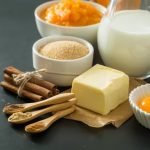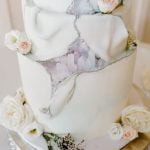Are you looking for ways on how to decorate a cake without icing sugar? Many people face the challenge of finding suitable alternatives for decorating cakes when they have dietary restrictions or preferences that limit their consumption of traditional icing sugar. Whether due to health concerns, dietary choices, or simply a desire for creative and unique cake decorations, there are numerous reasons why someone may need to explore options beyond traditional icing sugar.
For individuals who are avoiding refined sugars or following a specific diet such as paleo, keto, or vegan, finding alternative sweeteners is essential. In this article, we will delve into various options for decorating cakes without using icing sugar, including alternative sweeteners like honey, agave nectar, maple syrup, or stevia.
We will also explore natural and colorful options such as fruit toppings, nut butter frostings, whipped coconut cream, chocolate ganache, and even edible flowers and herbs as creative ways to adorn your cakes.
Understanding the importance of accommodating different dietary needs and preferences in cake decorating can open up a world of possibilities for creating beautiful and delicious treats that everyone can enjoy. Whether you are exploring healthier alternatives to traditional icing sugar or simply looking to enhance your baking skills with new techniques and ingredients, this article will provide valuable insights and inspiration for decorating cakes without the use of icing sugar.
Alternative Sweeteners
When it comes to cake decorating without using icing sugar, alternative sweeteners can be a game-changer. For individuals with dietary restrictions or those looking to reduce their consumption of refined sugars, using natural sweeteners such as honey, agave nectar, maple syrup, or stevia can provide a flavorful and healthier alternative. These sweeteners not only add sweetness to your cakes but also bring unique flavors and textures that can enhance your cake decorating experience.
Honey
One of the most popular alternative sweeteners for cake decorating is honey. Not only does it add sweetness, but it also provides a moist and tender texture to the cake. When using honey in cake decorating, it’s essential to adjust the other liquid ingredients in your recipe to maintain the right consistency. Additionally, be mindful of the flavor profile of the honey you choose as it can impact the overall taste of your cake.
Agave Nectar and Maple Syrup
Agave nectar and maple syrup are two other natural sweeteners that can be used as substitutes for icing sugar in cake decorating. Both agave nectar and maple syrup offer a mild sweetness with distinct flavor profiles that can complement different types of cakes. When incorporating these sweeteners into your cake decorating process, consider adjusting the amount of liquid in your recipes to achieve the desired texture and consistency.
Stevia
For those looking for a zero-calorie alternative to traditional sugar, stevia is an excellent option for cake decorating without icing sugar. Available in liquid or powdered form, stevia adds sweetness without affecting blood sugar levels, making it suitable for individuals with diabetes or those following a low-carb diet. However, because stevia is significantly sweeter than sugar, it’s crucial to use it sparingly and adjust other ingredients accordingly when decorating cakes.
Incorporating these alternative sweeteners into your cake decorating endeavors provides an opportunity to experiment with different flavors while catering to specific dietary needs. Whether you opt for honey’s rich sweetness, maple syrup’s warm notes, agave nectar’s light taste, or stevia’s no-calorie sweetness, these natural alternatives offer a delightful way to decorate cakes without relying on traditional icing sugar.
Fruit Toppings
When it comes to decorating a cake without using icing sugar, fruit toppings are a delicious and visually appealing option. Fresh or dried fruit can add natural sweetness and vibrant colors to your cake, making it an excellent choice for those with dietary restrictions or preferences. Whether you’re looking for a simple and healthy alternative or just want to experiment with new flavors, there are several creative ways to use fruit as decoration.
One way to decorate a cake without icing sugar is by arranging fresh berries on top. Berries like strawberries, blueberries, raspberries, and blackberries can be used individually or combined to create beautiful patterns and designs. You can also consider using thinly sliced fruits such as kiwi, mango, or peach to add a tropical flair to your cake. For a more artistic approach, try creating intricate fruit flowers or geometric patterns using different colored fruits.
Another option is to use dried fruit as a decorative element. Dried apricots, cranberries, cherries, or figs can be rehydrated and used to decorate the top of the cake. You can also chop dried fruits into small pieces and sprinkle them over the frosting for added texture and flavor. Using dried fruit not only adds visual interest but also provides a chewy and sweet contrast to the softness of the cake.
| Fruit Toppings Idea | Description |
|---|---|
| Fresh Berry Arrangement | Combine various fresh berries in an artistic pattern on top of the cake for a colorful and natural decoration. |
| Dried Fruit Flower Design | Create intricate flower patterns using rehydrated dried fruits such as apricots or cranberries for an elegant look. |
| Tropical Fruit Slices | Use thinly sliced tropical fruits like kiwi or mango to add a burst of color and exotic flavors to your cake. |
Nut Butter Frosting
When it comes to decorating cakes without icing sugar, nut butter frosting is a fantastic alternative that provides a creamy and delicious option for those with dietary restrictions or preferences. Not only is it easy to make, but it also adds a rich and nutty flavor to your cake.
One of the best things about using nut butter for frosting is that it can easily be flavored with other additives such as cocoa powder, vanilla extract, or even a hint of cinnamon.
To make this delectable frosting, you’ll need 1 cup of your choice of nut butter (almond or cashew are popular options), 1/4 cup of honey or maple syrup for sweetness, 1 teaspoon of vanilla extract, and a pinch of salt. Simply combine all the ingredients in a bowl and mix until smooth and creamy. If the mixture seems too thick, you can add a tablespoon of milk at a time until you reach your desired consistency.
Using almond or cashew butter for frosting not only provides an excellent alternative to traditional icing sugar but also adds protein and healthy fats to your cake. This makes it an ideal option for those looking for healthier alternatives in their baked goods.
| Ingredient | Amount |
|---|---|
| Nut Butter (almond or cashew) | 1 cup |
| Honey or Maple Syrup | 1/4 cup |
| Vanilla Extract | 1 teaspoon |
| Salt | Pinch |
Whipped Coconut Cream
Ingredients and Equipment
To make whipped coconut cream, you’ll need a can of unsweetened full-fat coconut milk (refrigerated overnight), powdered sugar or alternative sweetener of your choice, vanilla extract, and a hand mixer or stand mixer. It’s important to use full-fat coconut milk that has been refrigerated so that the cream separates from the liquid. This will allow you to whip the solidified coconut cream into a fluffy consistency.
Step-by-Step Instructions
- Begin by placing the can of coconut milk in the refrigerator overnight. This will allow the cream to separate from the liquid.
- Once chilled, carefully open the can of coconut milk without shaking it. Scoop out the solidified coconut cream that has risen to the top and place it in a mixing bowl.
- Add powdered sugar or your chosen sweetener to taste, along with a splash of vanilla extract for flavor.
- Use a hand mixer or stand mixer to beat the ingredients together until the mixture becomes light and fluffy.
- The whipped coconut cream is now ready to be used for piping and decorating your cake.
Tips for Success
It’s important to handle the whipped coconut cream gently once it’s been prepared as it may lose its fluffiness if overworked. You can also experiment with adding different flavors such as cocoa powder for chocolate whipped coconut cream or citrus zest for a refreshing twist.
Additionally, make sure to keep any leftover whipped coconut cream refrigerated as it can soften at room temperature. Enjoy using this dairy-free alternative in place of traditional icing sugar for all your cake decorating needs.
Chocolate Ganache
For those looking to decorate a cake without using icing sugar, chocolate ganache is a delicious and indulgent alternative that can add a touch of elegance to any dessert. Made from just two simple ingredients – chocolate and heavy cream – ganache provides a rich and glossy finish that is perfect for pouring over cakes or as a filling between layers. The best part? It’s incredibly easy to make.
To make chocolate ganache, start by finely chopping your desired type of chocolate – whether it’s dark, milk, or white chocolate. In a saucepan, heat the heavy cream until it just begins to simmer, then pour it over the chopped chocolate. Let the mixture sit for a few minutes to allow the heat from the cream to melt the chocolate.
Then gently stir until the two ingredients are fully combined and smooth. Depending on the desired consistency, you can adjust the ratio of chocolate to cream – more chocolate will result in thicker ganache, while adding more cream will create a thinner and pourable consistency.
Once your ganache is ready, simply pour it over your cake and use an offset spatula to spread it evenly across the top and sides. You can also let it cool slightly before using it as a filling between cake layers for an extra decadent touch. The end result is a beautifully shiny glaze that not only looks impressive but also adds an irresistible richness to your baked creation – all without relying on traditional icing sugar.
In addition to its stunning appearance, chocolate ganache also offers versatility in flavor by allowing you to experiment with different types of chocolate such as flavored options like salted caramel or citrus-infused varieties. Whether you’re decorating for a special occasion or simply want to elevate an everyday treat, mastering the art of making chocolate ganache opens up endless possibilities for creating show-stopping desserts without the need for icing sugar.
Edible Flowers and Herbs
When it comes to decorating cakes without using icing sugar, one unique and visually stunning option is to use edible flowers and herbs. This not only adds natural beauty to your cake, but also provides a fresh and flavorful twist to the overall taste. Here are some edible flowers and herbs that you can incorporate into your cake decorations:
1. Lavender: Sprinkle dried lavender buds over the top of your cake for a delicate and fragrant touch.
2. Rose petals: Fresh rose petals can be used to create an elegant and romantic look for special occasions like weddings or anniversaries.
3. Mint leaves: Use fresh mint leaves to add a pop of green color and refreshing flavor to your cake.
In addition to these options, there are many other edible flowers and herbs that can be used creatively in cake decorating without relying on traditional icing sugar. Experiment with different combinations to find the perfect look for your cake.
Another tip is to consider the flavor profile of your chosen flowers and herbs, ensuring that they complement the flavors of the cake itself. For example, using citrusy-scented lemon verbena leaves on a lemon-flavored cake can enhance the overall taste experience for those indulging in your creation.
Lastly, always make sure that any flowers or herbs used for decorating are indeed edible and free from pesticides or other harmful chemicals. It’s important to source these ingredients from reputable suppliers or farmers’ markets to ensure their safety for consumption.
Overall, using edible flowers and herbs is not only a visually stunning way to decorate cakes without icing sugar, but also adds depth of flavor and uniqueness that will impress your guests or recipients. Explore this natural approach to cake decorating as an exciting alternative for those with dietary restrictions or preferences.
Final Tips and Tricks
In conclusion, decorating a cake without using icing sugar is not only possible but also opens up a world of creative and unique options for those with dietary restrictions or preferences. Alternative sweeteners such as honey, agave nectar, maple syrup, or stevia provide a natural and flavorful substitute for traditional icing sugar. These sweeteners not only add sweetness but also bring their own distinct flavors to the table, enhancing the overall taste of the cake.
Furthermore, using fruit toppings can add a burst of color and freshness to your cakes. Fresh or dried fruit can be arranged on top of the cake in intricate patterns or used to create beautiful designs.
This not only makes for a visually stunning cake but also adds a delightful burst of flavor with every bite. Additionally, nut butter frosting and whipped coconut cream offer creamy and indulgent alternatives to traditional icing sugar that are perfect for piping and decorating cakes.
Lastly, getting creative with edible flowers and herbs can result in stunning cake decorations that are both beautiful and delicious. The vibrant colors of edible flowers combined with the fragrant aroma of herbs can elevate the presentation of any cake without relying on icing sugar. With these tips and tricks in mind, decorating a cake without icing sugar opens up endless possibilities for creating show-stopping desserts that cater to various dietary needs and preferences while still being absolutely delicious.
Frequently Asked Questions
What Can I Put on Top of a Cake Without Icing Sugar?
There are various alternatives to icing sugar that can be used as toppings for cakes. For example, fresh fruits like berries or sliced peaches can add a colorful and fresh touch to a cake without the need for icing sugar.
How Do You Write Your Name on a Cake Without Icing?
Writing your name on a cake without using icing can be done by using alternative ingredients like melted chocolate, caramel sauce, or even decorative edible flowers. These options allow you to personalize a cake without traditional icing.
What Can You Top a Cake With?
Cakes can be topped with a wide variety of toppings besides icing sugar. Whipped cream, ganache, fruit preserves, nuts, coconut flakes, or even edible glitter are just some of the many creative choices available for adding a decorative and delicious touch to cakes while avoiding traditional icing.

Welcome to our cake decorating blog! My name is Destiny Flores, and I am the proud owner of a cake decorating business named Cake Karma. Our mission is to provide delicious, beautiful cakes for all occasions. We specialize in creating custom cakes that are tailored specifically to each customer’s individual needs and tastes.





